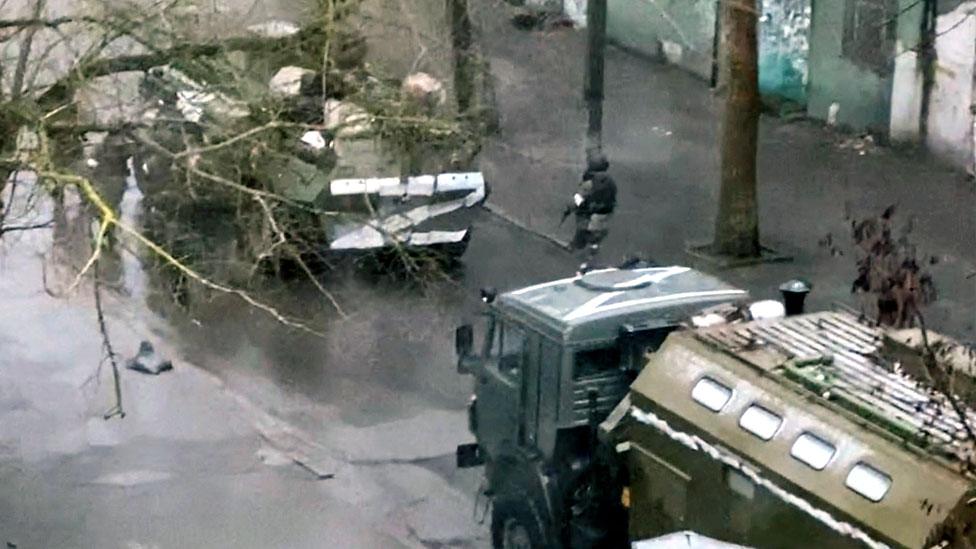Ukraine war: Why Kherson and Mariupol are key to Russian success
- Published

The Ukrainian city of Mariupol has come under heavy shelling
While Russian troops in the north and east of Ukraine have struggled to seize important targets, including the capital Kyiv, their advance into southern Ukraine appears to be more successful.
Russia sees the south as vital to the success of its invasion, and has been laying siege to several southern cities and captured the Zaporizhzhia nuclear power plant, which is Europe's largest.
The operation in the south was launched from Crimea, which was annexed by Russia from Ukraine in 2014 and is home to a sizeable Russian military presence.
On Wednesday, Pentagon spokesperson John Kirby said that Russia has a "sophisticated and healthy architecture" there.
A look at the map below shows how crucial the peninsula is as a base to the assault on southern Ukraine.

Russian troops are moving into Ukraine from Crimea, spreading east towards Mariupol and west towards Odesa, threatening to cut off Ukraine's maritime access which would inflict huge economic damage on the country.
"Strategically, there are major ports in that region that really allow Putin's forces to strangle any ability for Ukraine to be supplied via sea," Karl Qualls, professor of history and Russia specialist at Dickinson College, told the BBC.
To the east of Crimea, Russian forces are pushing to Mariupol, a city of 450,000 people, which is encircled and coming under heavy shelling. Water and power supplies have been cut off, and residents have told the BBC that they are terrified.
If Mariupol falls, it would give Russia control of one of Ukraine's biggest ports and create a land corridor between Crimea and the Russian-backed regions of Luhansk and Donetsk.
Connecting Crimea with mainland Russia via the rebel-held areas would make it much easier for Russia to move goods and people to and from Crimea. Russia has wanted this since 2014, when the conflict in the east began.
Currently the peninsula is connected to the Russian mainland only via a single bridge, built at great expense after the Russian annexation.
Nuclear power plant seized
North-west of Mariupol, Russia has seized the Zaporizhzhia power plant. In normal times the plant produces around 20% of Ukraine's electricity, so by taking it Russia controls a significant portion of Ukraine's possible power supply.
The Russian military has also occupied the city of Kherson which is located where the Dnieper river meets the Black Sea, a important location for troops to move further into Ukraine.
"We're seeing them exploit the capture of Kherson," Dr Jack Watling from the Royal United Services Institute told BBC Radio 4's Today programme. "They're now on the western side of the Dnieper and able to push both further up the river and towards Odesa."
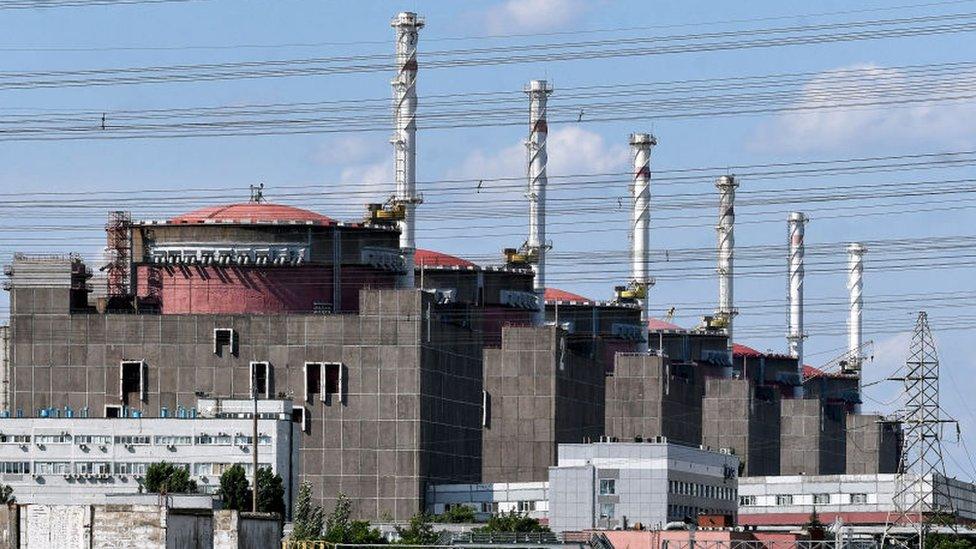
Russia says its forces have surrounded Ukraine's largest nuclear power plant
If Russia is able to move further west, to Odesa and beyond, it would not only cut off Ukraine's access to the sea but also surround the country on three sides.
"If they take Odesa, they have a key city to create a strategic arc around Ukraine. With Belarus in the north and Donbas to the east, they've all but encircled the country," Catherine Wanner, professor of history and Russia and Ukraine expert at Penn State University, told the BBC.
Novorossiya
There is also a historical context to Russia's southern invasion. The region of Ukraine stretching from Odesa in the south to Luhansk in the east was taken by the Russian Empire in the 18th Century after a series of wars with the Ottoman Empire. It became known as Novorossiya, or New Russia.
Under the Soviet Union, most of Novorossiya was part of the the Ukrainian Soviet Socialist Republic which later turned into modern-day Ukraine.
In 2014, after the annexation of Crimea, Russian President Vladimir Putin claimed that although Russia lost the territory of Novorossiya for various reasons, its people remained there.
"The mythology that Putin promotes is that these are Russian lands," said Professor Qualls. "It was part of the Russian empire but it wasn't Russians who lived there. There were far more Romanians than there were Russians, and Ukrainians were dominant."
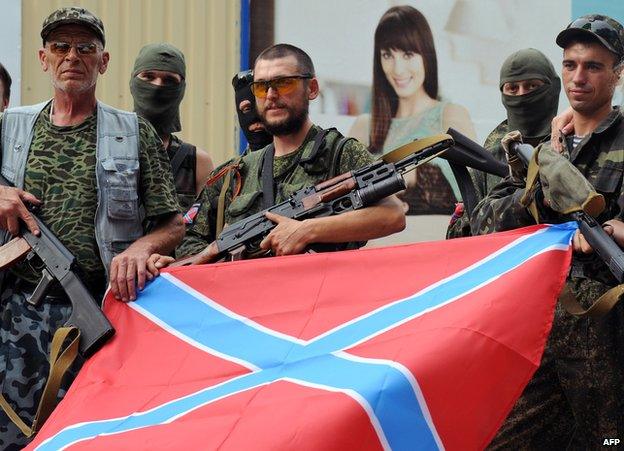
In 2014, separatist militants in Donetsk sported the tsarist-era "Novorossiya" flag
Nevertheless, the idea took hold, and for a brief period in 2014 the self-proclaimed separatist republics of Luhansk and Donetsk wanted to recreate Novorossiya, even sporting its tsarist-era red and blue flag.
Russia's historic claim to Ukrainian land has been a frequent theme for President Putin in the run up to the invasion, but Professor Wanner says it should not be taken seriously.
"Mr Putin has shown himself unashamed in terms of fashioning highly creative historical interpretations to invade and annex territory - Novorossiya is a flimsy justification", she told the BBC.
Watch: Do Russia's attacks on Ukraine amount to war crimes? Ros Atkins investigates

Russia attacks Ukraine: More coverage
THE BASICS: Why is Putin invading Ukraine?
INNER CIRCLE: Who's in Putin's entourage, running the war?
IN DEPTH: Full coverage of the conflict

Related topics
- Published3 March 2022
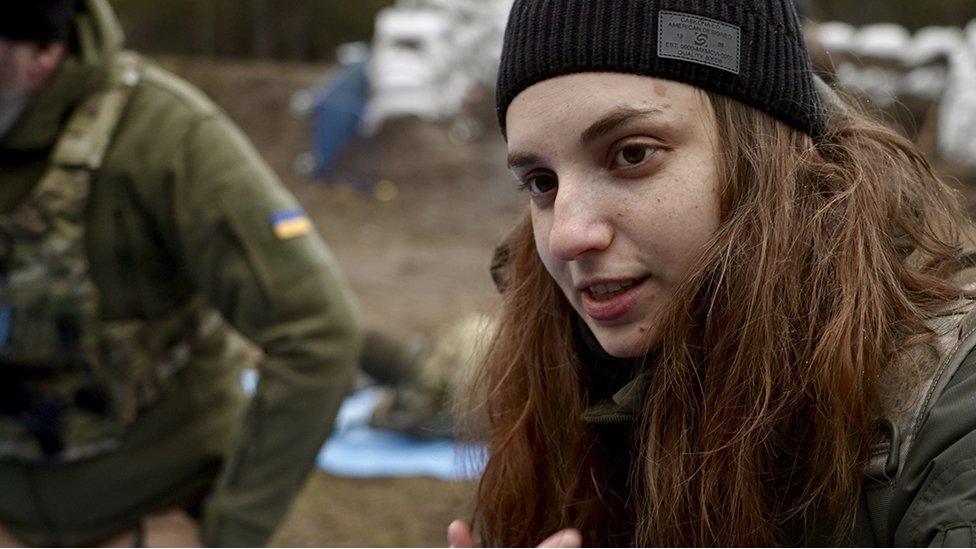
- Published3 March 2022
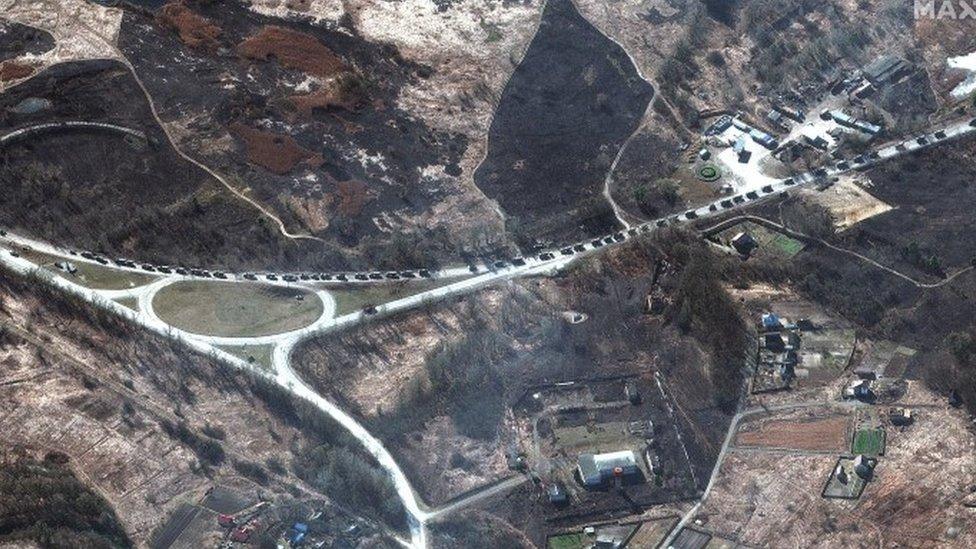
- Published3 March 2022
